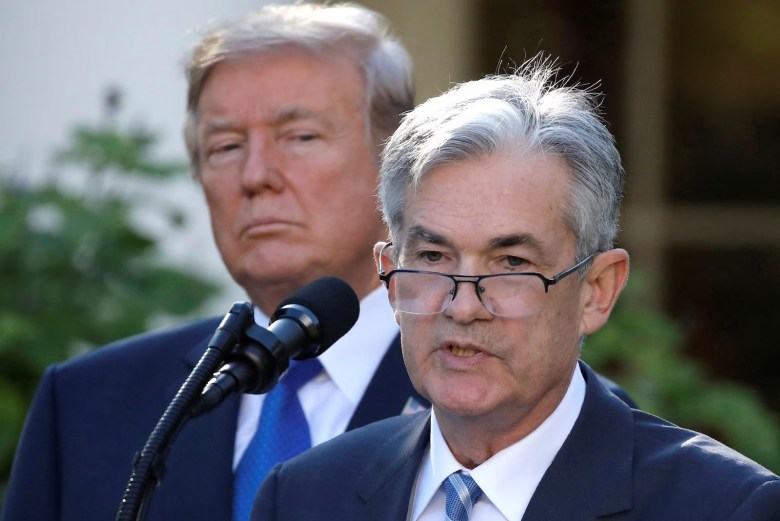Top Stories
Federal Reserve Cuts Interest Rates: What’s Next for Borrowers?

The Federal Reserve has announced a quarter-point cut in interest rates, bringing its benchmark federal funds rate to a range of 4% to 4.25%. This decision comes amid signs of a weakening job market, with the Fed aiming to support borrowers, particularly in the agricultural sector. At the mid-September Federal Open Market Committee (FOMC) meeting, the cut was largely anticipated, following indications from Fed Chair Jerome Powell in previous remarks.
Current Economic Landscape
During the meeting, eleven out of twelve voting FOMC members supported the quarter-point reduction, while one member advocated for a more aggressive half-point cut. The FOMC consists of 19 members, including seven Fed governors and twelve Federal Reserve bank presidents, with five voting on a rotating basis. The divergent perspectives on future rate cuts reflect uncertainty within the committee. In the latest “dot plot” projections, ten members anticipate at least two additional quarter-point cuts this year, while two forecast only one cut and seven predict no further reductions.
As inflation continues to hover above the Fed’s 2% target, the central bank faces a balancing act between promoting employment and stabilizing prices. The recent job creation slowdown prompted Powell to comment on the shifting balance of risks. “The balance of risks has shifted,” he remarked during the post-meeting press conference, though he cautioned against expecting a rapid series of cuts.
Political Pressures and Future Projections
The current economic forecasts from the FOMC members project a GDP growth of 1.6% this year and 1.8% next year, which is slow but not indicative of a recession. The committee’s median GDP projections have improved slightly since the last meeting, suggesting a more resilient economic outlook. Notably, the dissenting vote for a more significant rate cut came from Stephen Miran, a former advisor to President Donald Trump, who has been vocal about pushing for lower interest rates.
Trump’s influence has raised concerns about the independence of the Fed, especially as he has attempted to apply pressure on the central bank to act in line with his administration’s economic goals. Powell emphasized that the Fed’s decision-making process is rooted in economic analysis rather than political considerations, stating that the institution’s integrity depends on its ability to maintain independence.
Long-term interest rates, which are crucial for farmers and business borrowers, are influenced more by the bond market than by the Fed itself. If investors perceive that the Fed is succumbing to political pressure, there is a risk that long-term rates could rise, counteracting the intended benefits of any cuts.
Looking ahead, the Fed’s traditional aim is to navigate toward a “neutral” interest rate—one that neither stimulates nor restrains economic activity. While the exact neutral rate is uncertain and likely fluctuates, it has historically been viewed as approximately one percentage point above the inflation rate. With a target inflation rate of 2%, the neutral rate has been estimated at around 3%.
The latest dot plot projections indicate that most FOMC members expect the federal funds rate to settle between 3% and 4% over the next three years, with the median forecast suggesting rates of 3.6% at the end of this year, 3.4% by the end of 2026, and 3.1% by the end of 2027. However, these projections are subject to change based on economic developments.
In conclusion, as the Fed navigates these complex challenges, the path forward for interest rates remains uncertain. Powell’s acknowledgment of the limitations of economic forecasting underscores the unpredictable nature of the current economic landscape, as both borrowers and policymakers closely monitor forthcoming developments.
-

 Business5 months ago
Business5 months agoKenvue Dismisses CEO Thibaut Mongon as Strategic Review Advances
-

 Lifestyle4 months ago
Lifestyle4 months agoHumanism Camp Engages 250 Youths in Summer Fest 2025
-

 Sports4 months ago
Sports4 months agoDe Minaur Triumphs at Washington Open After Thrilling Comeback
-

 Sports5 months ago
Sports5 months agoTupou and Daugunu Join First Nations Squad for Lions Clash
-

 Top Stories5 months ago
Top Stories5 months agoColombian Senator Miguel Uribe Shows Signs of Recovery After Attack
-

 World5 months ago
World5 months agoASEAN Gears Up for Historic Joint Meeting of Foreign and Economic Ministers
-

 Health4 months ago
Health4 months agoNew Study Challenges Assumptions About Aging and Inflammation
-

 Business5 months ago
Business5 months agoOil Prices Surge Following New EU Sanctions on Russia
-

 Entertainment4 months ago
Entertainment4 months agoDetaşe-Sabah Violin Ensemble Captivates at Gabala Music Festival
-

 Entertainment4 months ago
Entertainment4 months agoBaku Metro Extends Hours for Justin Timberlake Concert
-

 Top Stories5 months ago
Top Stories5 months agoRethinking Singapore’s F&B Regulations Amid Business Closures
-

 Business5 months ago
Business5 months agoU.S. House Approves Stablecoin Bill, Sends to Trump for Signature









